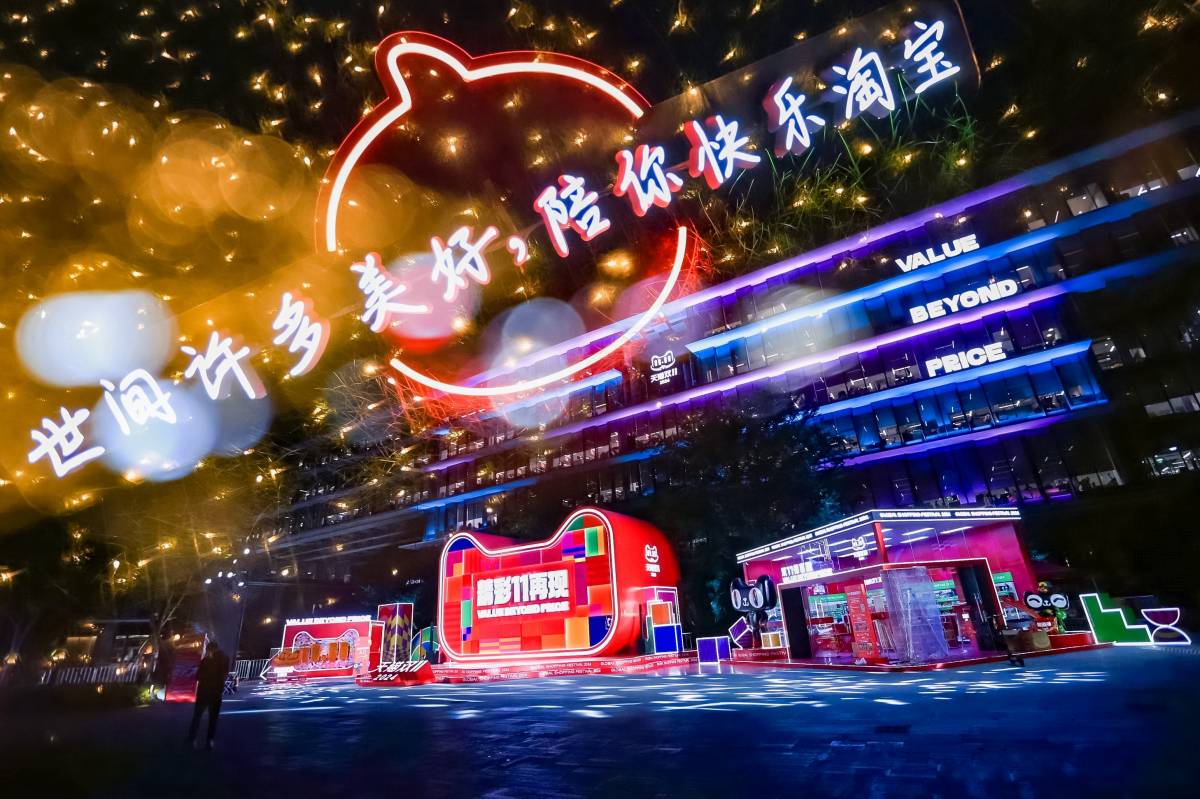
Photo credit: Messika
Parisian jeweler Messika is shaking up the Chinese diamond market with bracelets, earrings and necklaces designed for the young and young at heart.
These modern and playful creations have proven popular with trendsetters worldwide, including singers Beyoncé and Rihanna, who wore three Messika pieces during her Super Bowl 2023 halftime show.
Since launching in China in 2020, the brand is now working to broaden its local reach on Alibaba Group’s high-end e-commerce platform Tmall Luxury Pavilion, where Messika opened a flagship store last year.
“When I launched the brand, I was much younger and I really felt that I could not find a brand in the diamond world that corresponded to this [idea of] freedom and attitude,” said Messika’s Founder & Artistic Director Valérie Messika in an interview with Alizila.
The daughter of diamond merchant André Messika, she set out in 2005 to make her own mark on the industry with a range of bangles, earrings, necklaces and more, many featuring loose jewels set in long cages to create movement.
Her designs have struck a chord in the Middle Kingdom, the second-largest diamond jewelry market in the world after the U.S., according to a report published last year by consultancy Bain & Co..
“Chinese consumers are very sensitive to fashion trends… They quickly discover new brands such as Messika and appreciate the iconic designs of the Maison,” Messika CEO Jean-Baptiste Sassine explained in a written interview.
China now accounts for 10% of Messika’s global sales, and the brand is looking to increase that to 30-50% in the future, according to Sassine.
The brand’s expansion into the market comes after an industry-wide dip in diamond-buying sentiment due to lockdowns and travel bans that kept Chinese consumers at home for nearly three years.
But it has been worth the wait.
After diamond jewelry purchases in China fell by 26% to $7 billion year-on-year in 2020, sales surged by over 30% to $10 billion in 2021 and continued to rise into 2022, according to global diamond retailer De Beers’ Diamond Insight Report 2022.
Diamonds In A Digital World
Tmall enables companies like Messika to satisfy Chinese consumers’ desire for immersive and intimate shopping experiences by deploying tools like augmented reality, digital try-ons and one-on-one livestreaming sessions.
It has worked to great effect in a country where e-commerce channels accounted for 17% of diamond jewelry sales among surveyed retailers in 2021, Bain reported, up from 2% in 2013.
In less than a year of operation, Messika’s Tmall store has drawn 2.5 million unique visitors from across more than 100 Chinese cities, extending the brand’s reach beyond its 11 Mainland boutiques.
“Tmall Luxury Pavilion offers a comprehensive and convenient digital shopping experience that allows us to engage with digitally savvy and high-net-worth potential audiences in all China’s cities,” said Messika’s CEO Sassine.
It has also given the brand an opportunity to educate potential consumers about their designs – crucial in China.
More than a third of Chinese consumers do online research on diamond jewelry before making purchases, the Diamond Insight Report shows. This number rises to nearly half of Gen-Z shoppers in China, defined by the company as people born after 1998.

An Unusual Market
China is very different from other major markets for diamond jewelry – something that has played to Messika’s strengths.
Less than half of brides in China opted for a diamond engagement ring in 2019, unlike 70% of American brides, according to the Diamond Insight Report.
Instead, nearly half of the consumers in this market who buy diamonds do so as a treat for themselves, according to a Bain survey, as opposed to 29% in the U.S. and 27% in India.
This paves the way for creative and out-of-the-box designs to take hold.
“They are really open-minded and they want to be attracted to new brands and new trends,” said Messika of her Chinese customers.
This may be in part because young consumers account for a larger proportion of diamond jewelry sales. While around 5% of diamond purchases are made by Gen-Z customers in the U.S., this figure rises to 10% in China, De Beers’ research found.
“We have been developing very fast. We have launched 17 boutiques in Asia as of the end of 2022 and we are opening more in the coming year,” said the founder.

Keeping It Fresh
Messika knows when to apply traditional – and local – touches to have a big impact.
In late January, the company launched a limited Lunar New Year edition of its Baby Move Cord Bracelet and Move Uno Cord Bracelet featuring a red cord on Tmall Luxury Pavilion.
Sales of the item, which incorporated a color considered lucky by Chinese consumers, exceeded the brand’s expectations, and it sold out during the holiday period.
“Across the journey of rolling out the expansion in China, we always remain flexible in adjusting the strategy to fit the local market by understanding local customers’ feedback,” noted Sassine.
The brand is set to launch a fresh range of designs later this year to keep up with expected demand as consumers seek out bolder pieces to express themselves.
“It’s always a good reaction when you touch something that mixes perfectly with the culture of a country and an iconic model of a brand,” said Messika.
Discover more stories from China’s luxury sector here




